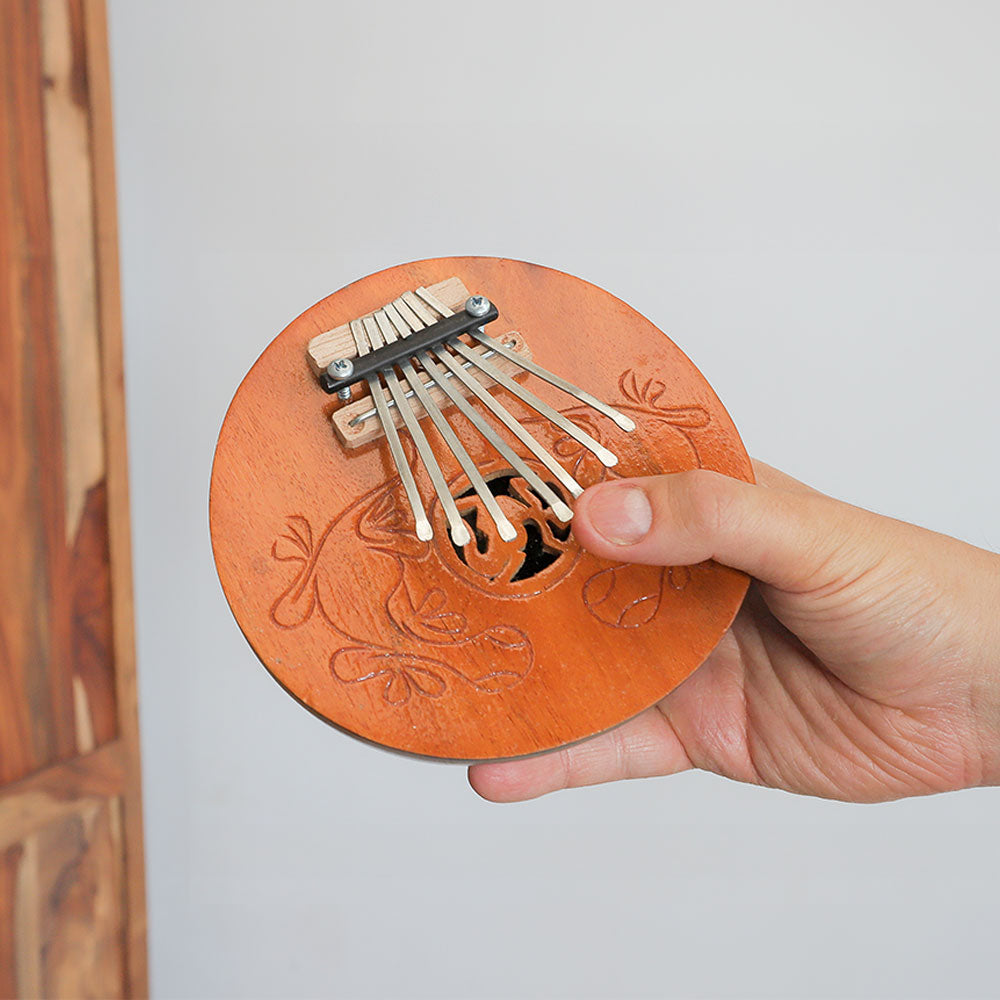If you're ready to learn how to play the panpipes, you've come to the right place. Panpipes, also known as pan flutes, are ancient wind instruments that have captivated musicians for thousands of years. They consist of a series of tubes of varying lengths, typically made from bamboo or reed, bound together in a row. The longest tube produces the lowest note, while the shortest produces the highest. Sound is created by blowing air across the open ends of the tubes, with the length of each tube determining the pitch.
1. Purchase Bamboo Panpipes
Before you start playing, you'll need a set of panpipes. Bamboo panpipes are a great choice for beginners, offering a warm natural sound. There are a variety of different sizes and styles.
Explore Handcrafted Bamboo Panpipes.
2. Learn With Our Beginner Tutorial Video
Our Panpipes Tutorial Video for Beginners guides you through the entire learning process. It demonstrates how to hold the panpipes, proper blowing technique, and how to play notes clearly.
Watch the tutorial video and learn today.
3. Getting to Know Your Panpipes
Take time to familiarize yourself with your panpipes. Note the number of tubes and their arrangement, which typically increases in length from left to right, determining pitch. Traditional materials like bamboo and reed provide a warm, natural sound. Hold the instrument comfortably with longer tubes on the left, ensuring a stable grip.
Test the airflow by gently blowing across the tubes to understand how sound is produced. Check for markings to identify notes, or add your own if needed. To keep your panpipes in good condition, store them in a dry place and clean or oil them as necessary.
4. Blowing position
The position for blowing the pipes should be relatively close as shown in the video above. You should be directly opposite the pipes and should avoid blowing them from a high position as it will not produce a clear tone. Doing this only works for creating sound effects and not for playing the instrument the correct way.
5. Proper Playing Technique
To play the panpipes, blow gently into a bamboo note in a similar way to how you would blow into a glass bottle. This will produce a sound. As you progress, you can adjust the angle of your lips to change the pitch. It's important to maintain a good posture while playing the panpipes. Keep your back straight and your shoulders relaxed. This will help you breathe properly and produce a clear sound. As demonstrated in our tutorial video.
6. Identifying the notes
You can download a free tuner on your phone so that you can identify the notes. Open the tuning app and one at a time blow the note to identify the key. This is an important part of learning to play the instrument so that you can learn specific songs and their relative melodies.
7. Practicing Your Scales
Like any other instrument, the panpipes require practice to master. Start by practicing your scales. Begin with the lowest note and work your way up to the highest note, playing each note in between. Focus on your breathing and strive for a consistent sound. For a single row panpipe you would typically play left to right or right to left but for a double row you would need to alternate between rows up-down-up-down whilst continuing to play along the scale.
This practice will allow you to become more comfortable with your panpipes, it will help you improve your blowing position, technique and will mean that you can identify notes faster. Over time you will train your ear to be able to identify the note by sound without having to refer to a tuning app and with daily practice you can experiment with different rhythms making up your own melodies and play your favourite songs.
8. Experimenting with Rhythms
Once you feel comfortable playing your scales, try experimenting with different rhythms. Start with simple patterns and gradually increase the complexity. You can also try playing along with your favorite songs to get a feel for different styles of music. Playing the panpipes can be deeply rewarding, but it takes time and patience to master. Remember to practice regularly and focus on your breathing and posture. With dedication and perseverance, you'll soon be playing beautiful music on your panpipes.
9. Online Panpipes Learning Resources
Learning panpipes is easier with visual guidance, so YouTube step-by-step lessons are ideal for showing how to hold, blow, and produce different notes. Beginners can start with easy covers of popular songs like “Amazing Grace,” “Titanic,” “Tears in Heaven,” and “Unchained Melody,” then progress to upbeat tracks like ABBA’s “Dancing Queen” or Celine Dion’s “My Heart Will Go On.”
The panpipes’ flexibility lets you explore many genres, from Christmas songs and Disney tunes to love songs, pop, gospel, and even funeral music such as “Danny Boy.” With patience and practice, you can play a wide variety of melodies across genres, gradually mastering both simple and more challenging pieces.
10. The only panpipes resource you'll ever need

If you enjoyed the tutorial video and want a full step-by-step guide with 20 songs, diagrams, and tuning tips, the complete panpipes player ebook is perfect. It’s a concise PDF for beginners or anyone looking to refine their skills.










3 comments
Ryan Bomzer
@Dennis
I’m glad you found this article useful, the best panpipes to learn on is down to personal preference however the Siku panpipes are quite nice to learn on as they have more notes, the notes are slightly larger and it is less complicated with the playing position.
Dennis
I have read your article on how to play the panpipe and found it very helpful which is the best panpipe to learn on
Benjamen
I absolutely loved reading it. It was very helpful.
Thank you